
Published May 5, 2021
QUICK NEWS: We have begun a petition to change the Village Regional Library to Oberlin Village Regional Library because we feel Oberlin Village Regional Library better reflects history and academic aspirations. Go to chng.it/yvvFNZmh6G to sign the petition and read more about this issue!
Dear Readers, 🌎🕊🚀💦
When thinking about our topic for this month, we had so many ideas! Leeya’s birthday on the 25th, Earth Day on April 22nd, National Space Day coming up, and pressing problems going on with the environment. We felt passionate about all of these timely issues, plus we knew this would be our tenth edition! So, in order to encompass it all, we chose to title this magazine ‘Big Topics’ to show the relevance of all of these topics in one important edition. However, we will warn you. This issue is a lot. It has four or five topics all in one issue, and some issues might be hard to read for some. Other than that, enjoy our tenth edition!
P.S. We hope you like the new cover design. We decided to change things up for our 10th edition and possibly beyond!
Happy April!
-Leeya and Adalia
It’s the Tenth Edition!!
Can you believe it? This is A and L’s 10th edition! Here is a short article about A and L magazine, a message to our readers and more.
How did the idea for the magazine come about?
Leeya’s mom was taking a walk at the beginning of the COVID pandemic. She noticed some neighbors walking around. Everyone was socially distanced because of restrictions and she wondered if there was a way to bring the community together more. She was talking about it with Leeya and Leeya thought of the Board Boxes (care packages that we exchanged with one another every week).
Leeya texted Adalia to come over the next day. We thought about possible ideas to bring the community together. We discussed: care packages, activity boxes, goodie bags, etc. But none of these seemed big enough to encompass all our ideas, without being overwhelming to create…Then, Leeya remembered a Board Box Adalia had given her…Except instead of being a box, it was a book! Thus, the magazine idea came about!
Why ‘A and L Magazine?’
While we were working on the first issue of the magazine, we called the project ‘A and L Magazine,’ hoping to come up with a different name further along the line. We were never able to find a different name, and ‘A and L Magazine’ has since grown on us!
How do we come up with the ideas for the issues?
Like we mentioned in past livestreams and vlogs, we work EXTREMELY well together. We may be walking around or even texting and one of us will mention an idea we’ve come up with. Then, the other will build upon that idea. The creative processes in our brains create AWESOME ideas that we can always continue to build more upon later. Sometimes, we even come up with ideas for editions waaaaaay in the future and we create note documents to format later. Other times we have small ideas for articles and more to add to the magazine. Check back for more editions at the end of every month!
Thank you message to our readers:
Dear Readers,
We wanted to say thank you. We love creating the magazine for all of you and appreciate your support, whether it is by donations, subscribing on YouTube, giving us encouraging words or feedback on the Reader Form.
We also want to thank all of our interviewees for the information they have given us! We have enjoyed talking to each and every one of you. Every opportunity has been a GREAT learning opportunity, whether it was about jobs, architecture, medicine, gardening, history, or something else. You are very much appreciated!
To our YouTube subscribers, thank you for watching our videos. We love filming our videos as much as we love creating the magazine! Whether you are hitting subscribe, like or play, we appreciate it. Additionally, we really enjoy virtually interacting with those who watch our live streams. Thank you to our viewers and chat participants!
Lastly, thank you to our family and friends who have supported us with our magazine. Thank you to our parents for getting us supplies and more. Thank you to our siblings for being WONDERFUL artists. Thank you to our friends for always participating and helping out! And last but not least, thank you to our grandparents for being some of our first supporters.
-A and L
Comic by Leeya
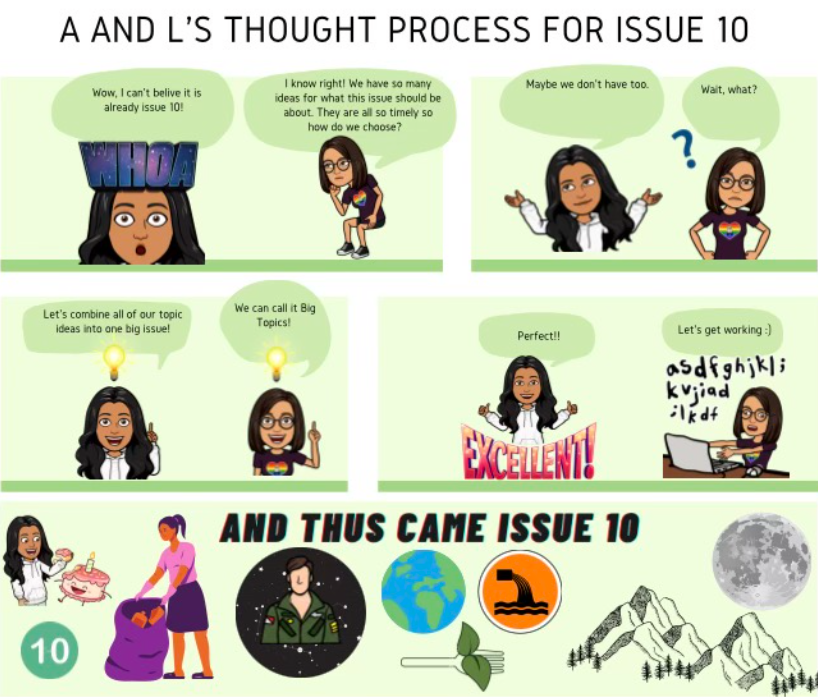
On a Full Moon
by Ms. Lany (A and L’s Writing Contest 2nd place winner)
They say it always happens on a full moon,
As owls question the universe,
As bats hang heads down,
As pine needles prickle in the wind,
As oak leaves quiver on their limbs,
As thunder grumbles from afar,
As rain clouds churn above my roof,
As raindrops tap at my window,
Alone in my bed I close my eyes
And call up memories as if old friends,
To live again what is past,
To love again what is lost.
🎊Happy Birthday to Leeya! 🎉
Guess what…? April is Leeya’s birthday month! Check out our birthday LiveStream to see all the fun we and other participants had celebrating Leeya’s birthday! Have fun figuring out the birthday theme and seeing Leeya’s reaction to her surprises!! Check out the other videos in the birthday playlist (found in the description of the video and on our website) to learn more about those surprises. Go to youtu.be/ZdGGcvkTiQE watch.
Oberlin Cemetery: A Museum of the Forgotten
By Leeya
On the weekend of the 17th, both of us went to the Oberlin Cemetery to help with stick cleanup and more. Read this article to learn about Leeya’s thoughts about the experience!
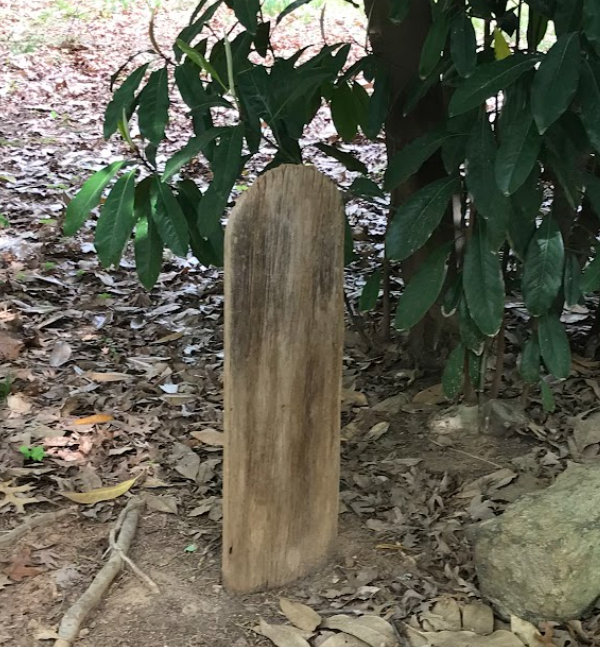
Many people think of a cemetery as a burial ground, graveyard, memorial park. When in reality, it’s much more. I think of a cemetery as a fascinating place, a place of history or a mini-museum.
One cemetery that I find particularly fascinating is the Oberlin Cemetery. Growing up, it was a place of mystery to me, since I had never been inside (despite it being walking distance from my house). The cemetery is located in historic Oberlin Village. Oberlin Village was a community started by freed slaves. The freedmen bought the land from the Cameron family, one of North Carolina largest slaveholders, and started a freed black community in Raleigh, North Carolina. Oberlin Cemetery is one of several Black cemeteries in this area but I find this one so interesting because it represents the forgotten. Unlike most cemeteries, all of the markers are not tombstones. In fact, many markers are sticks, pieces of wood, or even indents in the ground. The marker that caught my eye the most was a thin piece of scratched up and worn out cedar wood that sat under a magnolia tree. It turns out, that marker was the oldest thing there and placed down in the 1800’s! It is absolutely incredible to see how thin a piece of wood can last that many lifetimes.
Although I knew about the cemetery, I had never been physically in it until last Saturday when I was invited to attend a cleanup there with Adalia. I was expecting to clean up trash but surprisingly enough, the cemetery was fairly clean. Instead, we picked up big sticks that fell from all the trees in the cemetery. These sticks were then ground up to mulch that was recycled back into the ground. So, it was really a win-win because we were helping the cemetery and the environment.
Okja – A Film
Featuring a Very Special Interview with Anokhi Mehta
★★★☆☆
Warning: The movie deals with topics such as the animal industry, the film industry and animal cruelty. For those 15+ is such an important learning opportunity. Watch with caution because this is a very graphic movie.
What was this movie about? This movie takes place when the world is going through a famine, and humans need a way to feed themselves. As a result, they create a super pig which is supposed to feed everyone. They create nine of them and place them in various parts of the world to see who can become the biggest pig. The movie centers around one of the pigs, Okja. She is put in a poor farm in Korea with a girl and her grandfather. Okja wins the biggest pig contest and is abused because of it. The movie deals with topics such as the animal industry, the film industry and animal cruelty. For those 15+ is such an important learning opportunity. Watch with caution if you are worried about graphic details.
Who did you watch this movie with? I watched the first half with my mom and the whole thing with my dad and sister.
Who introduced you or told you about the movie? My friend’s dad told my dad who wanted our family to watch it.
What was your reaction during the movie? I was crying and completely shocked by the things portrayed in the movie.
What was your reaction after the movie? I was crying and mad at my dad for making me watch the movie. It was so horrific that I had to watch My Little Pony after the movie to get over it.
How/why did it convince you to go pescatarian? I did not want to contribute to industries that were portrayed in the movie. The movie portrayed them as terrifying in an extremely graphic way.
Would you recommend this movie? No, since I had such a scarring experience with the movie, I would not recommend it. However, if you really, really want to see it, I would recommend it to 9th graders and above. If you are sensitive to topics like animal abuse and rape, I would highly advise to avoid this movie.
The Lorax (2012)
“Unless someone like you cares a whole awful lot, nothing is going to get better…It’s not.”
The Lorax is an inspirational story filled with heartening songs that prepare you to save the world from global warming and deforestation. Our story begins when The Once-ler, an outcast young man has a dream of building a new ‘Thneed.’ But he becomes greedy and his ego takes over his honesty and promise. Deforestation is ruining homes, smog is causing air pollution and gloop dumping is causing water pollution. Years later, in a world where you must buy your air to live, a boy hears about trees and decides to embark on a journey to bring them back. Can Ted Wiggins save Thneedville (and the rest of the world) from a certain disaster? A and L both love this movie and have watched it many times. This is a great movie to watch with kids as it is very family-friendly. We highly recommend it!
Water Rising (My Learnings from Rising: Dispatches from the New American Shore by Elizabeth Rush)
By Adalia
When I first heard of the water crisis, I heard of plastic floating in the ocean. There is so much more to water pollution than that: microplastics and harmful chemicals contaminating our oceans, overfishing, issues with marine ecosystems and more. I’ve also learned of the freshwater crisis that comes from wasted water and melting glaciers, caused by global warming.
The water crisis is much more involved in life than I had realized. Elizabeth Rush’s Rising points out these issues in a very comprehensible way.
Rush opens her book explaining the different parts of a marsh and how freshwater and saltwater interacts within a marsh. Because sea levels are rising at such high rates, freshwater in marshes near the coast is being depleted – mixed in with saltwater until it is no longer freshwater. Life may have been able to adapt to these changes had they been naturally occurring, but such rapid changes cause many species to die off. Many species that live in saltwater are moving inland, disrupting the balance further.
Usually, the buildup of salt leads to accretion, which causes elevation to rise and allows changes to keep pace with one another. Through the last 28 centuries, these processes are out-paced by rising sea levels. Salt is able to get into the groundwater, affecting what grows in those coastal areas and drinking water in those areas.
Scientists have observed that flora and fauna unused to a salty environment will decompose faster, causing the ground to collapse and release long-held greenhouse gases into the air. Even the ground can rot: which is what is happening.
Cordgrass, one of the main species of plants in Staten Island marshes, has vast roots that cover the marsh. The cordgrass strengthens the soil and ground, making it virtually impossible to dig into…until the ground fills with salt and the rhizomes of the plants can no longer grow properly. This is only one example of a species causing the ground to collapse because of its decomposition and stunted growth.
It is obvious that biodiversity is affected by rising sea levels. Birds are some of the most affected animals – one third of all migratory birds are in threat of extinction because part of their migratory journey follows along freshwater marshes, which are disappearing.
Did you know about 50% of endangered species in the United States have passed through the wetlands at some point in time? Being concerned about the flora and fauna in an area is important – they are not able to easily move, while humans have a highly superior ability to adapt to changes, especially man made ones. We need to find a way to allow evolution to continue in these areas we are trying to protect.
In studying coastal wetlands, scientists have found that more than 25% of carbon in the Earth’s soil is found in wetlands, which only cover 5% of land on Earth – wetlands are more effective at producing clean air than the Amazon rainforest! The rising salt levels in marshes negatively affects this clean air production because the salt kills so many important organisms, while preventing important cycles from occurring within the soil.
These changes have a cycle of their own: global warming is causing the sea levels to rise, which is affecting coastal marshes everywhere, which, in turn is releasing greenhouse gases into the air and causing the atmospheric temperature to rise further.
Did you know carbon dioxide levels have only been seen as high as they are now in the Pliocene epoch, which was between 2.6 and 5.3 million years ago? And we wonder: is climate change the new normal? If you think about it, a single species setting in motion a chain reaction of disasters is far from normal.
Life is not prepared for such changes.
The magnitude of which we humans have changed the Earth is incredible (and not in a good way). If the timeline of Earth was on a 12-month calendar, human existence would be several hours on December 31 and Homo Sapiens existence from the industrial revolution onwards, would be a mere fraction of a second. The changes we have wrought are crazily immense: changes that would usually occur due to an asteroid slamming into the planet or worse!
Looking at history, you can see the ocean levels rising and falling at odd intervals, known as “meltwater pulses.” These are surges that may cause as much as fifty foot rises in three or so centuries. What we are currently witnessing is the largest meltwater pulse in history – and, it’s mostly man-made.
Did you know that when glaciers began melting after the last ice age, much of the northern American shores formed into marshes? In 1850, the Swamp Land Act was passed to allow people to claim ownership to any marsh they could drain. This explains why major towns in New York and on Staten Island are so inhabited – they were drained in the late 1800s and people flocked to their coast to live.
Another example of the effects of the Swamp Land Act is Miami. Miami, amongst other places in Florida, was once a mangrove swamp, until the land was reworked, by humans, to fit human liking. Sand was added to beaches and more than 55% of the state has been terraformed. Because Florida is such a flat state, rising sea levels affect it even more drastically: the flora and fauna in Florida’s remaining marshes will soon die out.
The west coast also used to be covered in marshes and wetlands. In California, natives used to use the ocean water to produce salt. When colonists arrived, they too wanted to get salt, however, they wanted the salt for profit and rapidly began to alter the topography to fit their ‘needs.’ Topographical changes and climate change has altered and made it difficult for the state of California to restore the wetlands destroyed when the Swamp Land Act of 1850 affected California. Over half a million acres of wetlands were shored up, drained and transformed along its coast!
In other areas, like the coast of Louisiana, we are terraforming the land for a different reason: to try and fix the problems rising sea levels have caused.
The problem with man made changes is that they don’t help. We create plugs and barriers that prevent freshwater from filtering through them. When seawater does happen to overflow into these “barricaded” areas, the water isn’t able to filter itself and the problem intensifies. Along the Mississippi River, poorly built dams and plugs are causing more harm than good: they are contributing to the rising levels of seawater.
What could help the marshes is space. Rush says stopping man made attempts to help and relocating cities and towns near marshy coastal areas will help the marshes “learn” to change with their environment and begin to fix themselves. We need to retreat and relocate humanity from these places in order to provide relief. And, we must retreat together to ensure that the cost of flood damage and more is cut off entirely.
Relocation and retreat is something many families are wary about because, according to Rush, many of the families are lower-middle class and don’t want their family lands to be turned into higher-middle class living and their homes lost.
It is sad to see how in some places the importance of land depends solely on who lives, works or builds there. Near Silicon Valley in California, the value of the once marshy land will rise as it’s being restored and cause the current homeowners to lose their homes. They will no longer be able to afford the land. The privilege of moving and still being able to afford the same things and remain in the same lifestyle is not, and will never be, a privilege that everyone shares.
A final thing Rush speaks about is how the melting glaciers affect sea level issues.
Whole ecosystems are disrupted when glaciers in the Arctic melt. Animals, once attuned to changes in seasons and weather can no longer correctly migrate, feed and more. Some animals are losing food sources and habitat, while others are breeding and growing days and weeks before the usual time.
Glaciers melting cause another problem: their gravitational pull is lessening, causing ocean levels in places like the East Coast to rise even more. Some estimates say that global temperatures rising even a mere two degrees, could cause the loss of as much as 18 feet of land in places like Louisiana! The geography of islands and land along the coast are losing their shape: rivers, bayou and bays are disappearing. Our coastal wetlands are drowning in saltwater.
Estimates guess by 2050, there will be over 200 million “climate” refugees because of these changes. Those of us that could once live self-sufficiently near the coast are now having to go to industrialized stores and groceries in order to get food once grown on their own. Some of us can no longer afford our homes and land. These changes will come to affect everyone on this planet.
The thing about these changes is that we are well aware of them, and, Elizabeth Rush’s book, Rising, gives us even more information on how these changes are connected. We know the problem: climate change, global warming and human pollution, which means we know how to get to the root of rising sea levels (amongst dozens of other related issues) in order to begin healing our impact on our home: Earth.
We need to find solutions that don’t just mean buying time. We need to find solutions that provide resilience to our marshes and coasts. We need to think not about tomorrow, the next year or even the next decade, but the next hundred years, the next five hundred years.
Ways to Give Back to the Environment
By Leeya
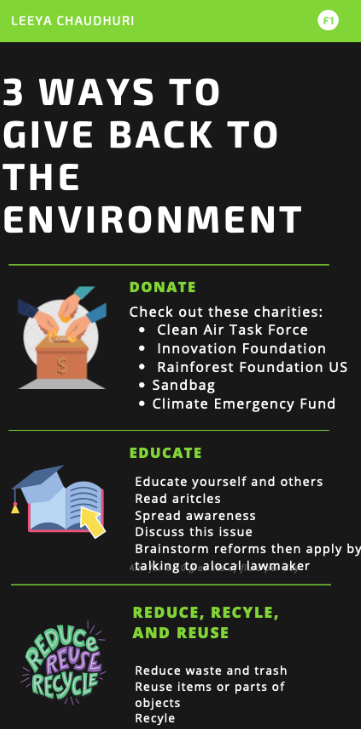
The United States Space Force: Semper Supra
By Leeya
In honor of National Space Day, “We need to stay one step ahead of the future.”
Most know space is an essential part of life. But what many don’t know is that space is now a threat and it needs to be protected as the space domain continues to grow. That’s why on December 20th, 2019, the United States Space Force was established.
The United States Space Force is the space service branch of the U.S. Armed Forces, one of the eight U.S. uniformed services. Currently, it is the world’s first and only independent space force. Their job is to organize, train, and equip space forces in order to protect U.S. and allied interests in space and to provide space capabilities to the joint force.
Their motto is Semper Supra which translates to always above. Semper translates to always which in this case means there is no end to space. Supra translates to above which means look up to the stars, and can always achieve something great.
But there is some controversy surrounding the Space Force. Some think the United States Space Force is a waste of money and will actually make America weaker. Forbes further explains these concerns which include: disrupting vital military relationships, creating new barriers to joint force integration, lack of proper resources, draining resources from other more productive organizations, and making the US air force less effective. However advocates of the force argue that the US Space Force is completely necessary and only helps. Douglas Loverro from Space News writes “Space is too critical for the nation’s defense not to have an organization that speaks for its importance, defends it against all comers, and jealousy advocates for new missions and new responsibilities…”
One of the biggest confusions about the US Space Force is, doesn’t the US Air Force also do what the US Space Force does? While there is heavy debate around this, the US Space Force is actually the Air Force. Think of this way, the Space Force falls under the Air Force Department but is a separate branch of the Air Force. Because of this, they have their own set of responsibilities. Space News writes, The U.S. Space Force organizes, trains and equips forces so they can be ready to respond during a crisis. The U.S. Space Command would then use space operators to help defend satellites if they are targeted by enemy lasers or anti-satellite missiles.
For more info on this topic, go to:
- spaceforce.mil/Connect-With-Us/Videos/
- cato.org/policy-analysis/space-force-ahead-its-time-or-dreadfully-premature#institutional-history-space
- en.wikipedia.org/wiki/United_States_Space_Force
- brookings.edu/events/space-force-the-pros-and-cons-of-creating-a-new-military-branch/
- spacenews.com/air-force-tries-to-set-record-straight-on-what-the-space-force-is-really-about/
- spacenews.com/why-the-united-states-needs-a-space-force/
Virtual Voyages: NC’s Mountains
This past spring break, both of us went to the mountains for vacation. Keep reading to kind out about our unique experiences!
Boone, North Carolina

- Boone is a great place to visit for a calming trip to the mountains
- In the picture to the right, you can see the peaks of Grandfather Mountain over Price Lake, which is an excellent place for a one or two hour hike with gorgeous views
- Boone is not only home to beautiful walks in nature but also Appalachian State University, which has an awesome library and beautiful pathways to visit
- Linville Falls, near Boone, are unique in that they are in a gorge and have a unique, twisting path of water!
Black Mountain, North Carolina
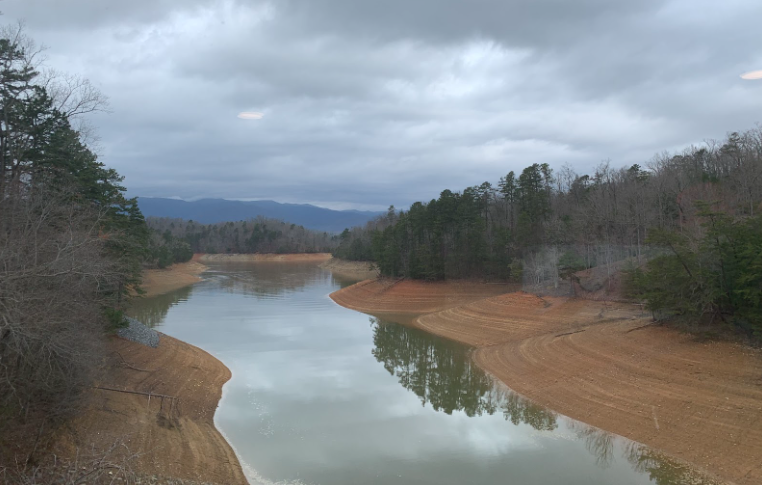
- The town of Black Mountain is very cute with some great restaurants and shops. Plus, it’s immersed in the mountains!
- Lake Tomahawk is also located in Black Mountain which has a great walking trail that looks out on the mountains and water. This lake also has tennis courts, a public pool, and picnic tables. I had a great time playing tennis with my grandpa and brother while looking out on the mountains.
- Black Mountain is only a 15 minute drive from Asheville so it’s a great place to say because you can experience a small cute mountain town but if you want to go into the city, you absolutely can!
- Overall, if you want a mountain getaway while still having things to do, this is the place!
Tech Tips: Using Canva to Organize Your Desktop
Oftentimes, our desktops are messy and scattered. As magazine editors, it can be super important that things are organized. Using Canva to create an easy background that will help organize and manage desktop is a great way to begin organizing!

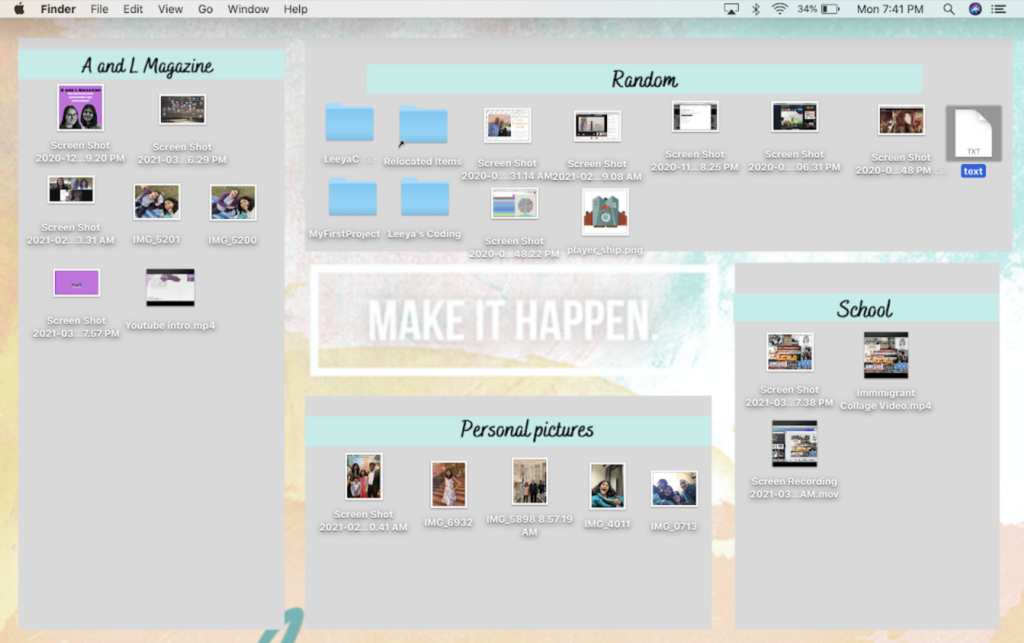
Credits to A House Full of Sunshine for this process. Visit tinyurl.com/4ac5kn7m if you want a more detailed step-by-step guide.
